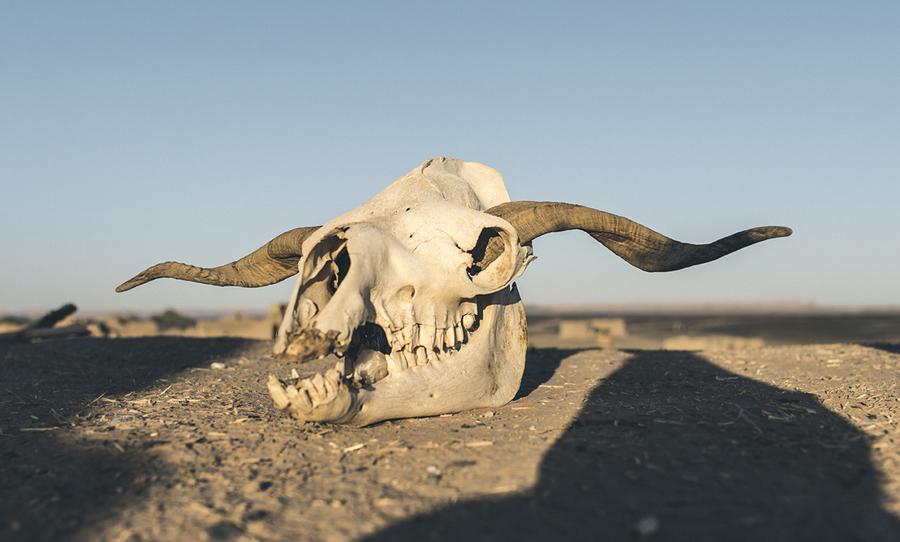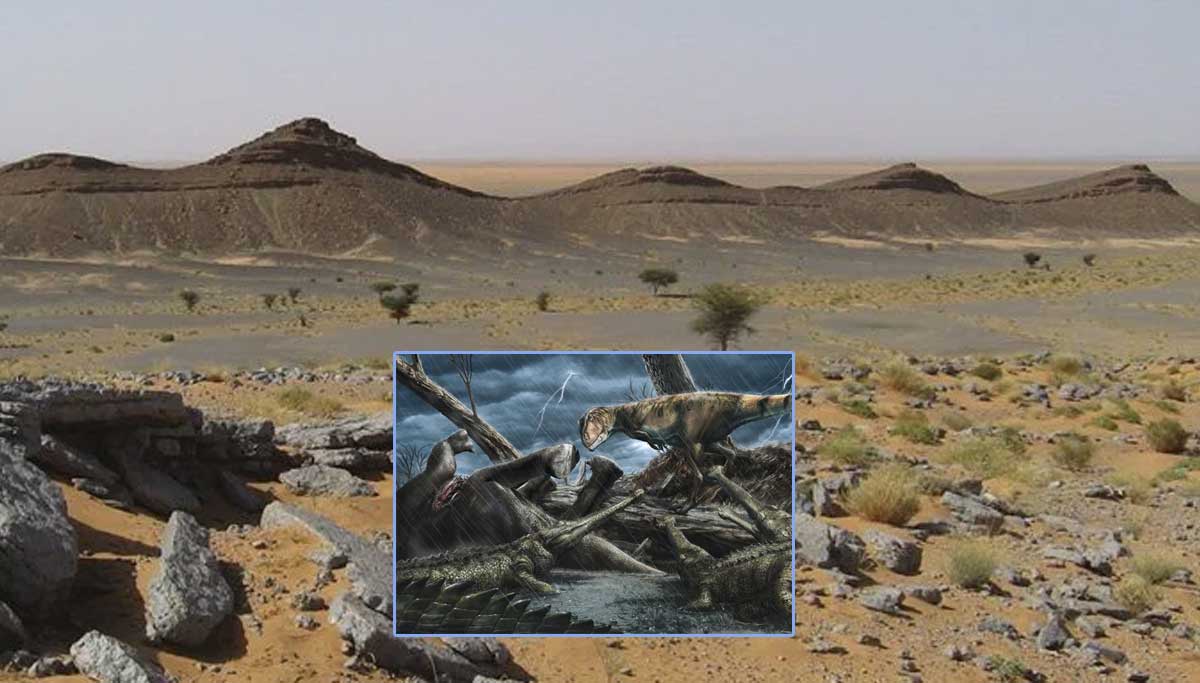A large number of ferocious predators, including predatory dinosaurs, pterosaurs and crocodile-like creatures, made Sahara the most dangerous place on Earth, according to an analysis of fossils from the Cretaceous-period sediments in eastern Morocco.
The giant predatory dinosaur Carcharodontosaurus eyes a group of Elosuchus — crocodile-like hunters — near a carcass. Image credit: Davide Bonadonna.
About 100 million years ago, the so-called Kem Kem beds were home to a vast river system, filled with many different species of aquatic and terrestrial animals.
Fossils from this formation include three of the largest predatory dinosaurs ever known, including Carcharodontosaurus and Deltadromeus, as well as several pterosaurs and crocodile-like hunters.
“This was arguably the most dangerous place in the history of planet Earth, a place where a human time-traveler would not last very long,” said Dr. Nizar Ibrahim, a researcher at the University of Detroit Mercy and the University of Portsmouth.
“Many of the predators were relying on an abundant supply of fish,” added Professor David Martill, a scientist at the University of Portsmouth.
“This place was filled with absolutely enormous fish, including giant coelacanths and lungfish. The coelacanth, for example, is probably four or even five times large than today’s coelacanth.”
“There is an enormous freshwater saw shark called Onchopristis with the most fearsome of rostral teeth, they are like barbed daggers, but beautifully shiny.”
The paleontologists produced the first detailed and fully illustrated account of the Kem Kem beds.
The researchers now define this sedimentary package as the Kem Kem Group, which consists of two distinct formations, the Gara Sbaa Formation and the Douira Formation.
“This is the most comprehensive piece of work on fossil vertebrates from the Sahara in almost a century, since the famous German paleontologist Ernst Freiherr Stromer von Reichenbach published his last major work in 1936,” Professor Martill said.
Source: sci.news












